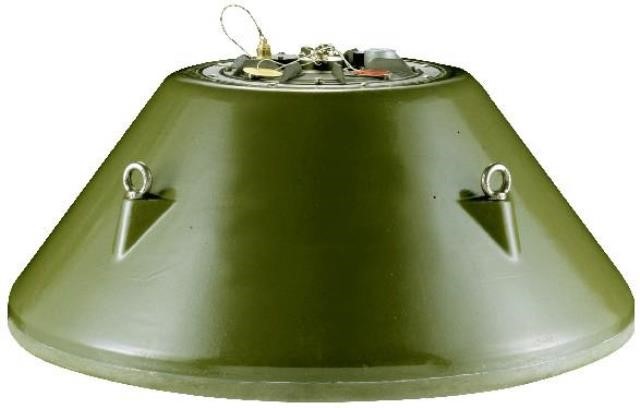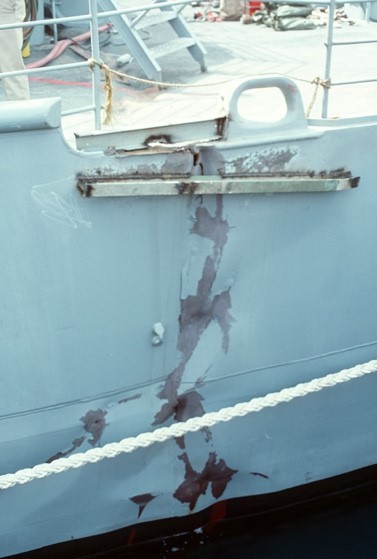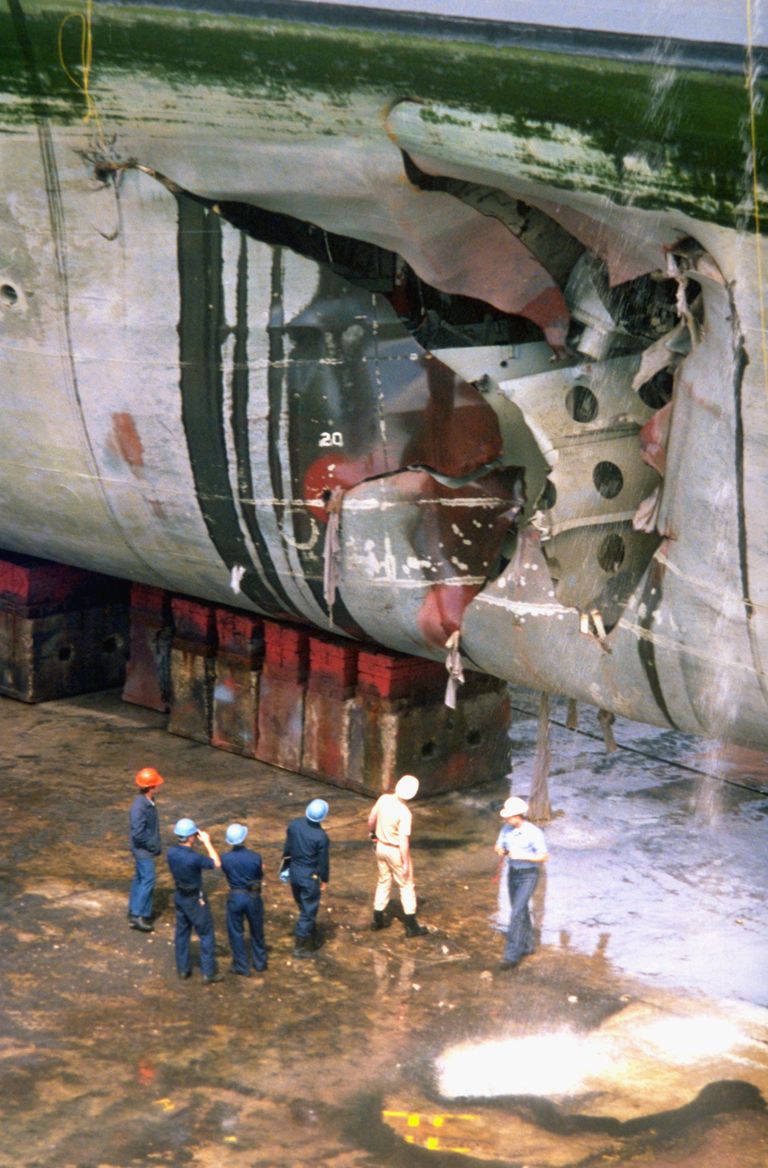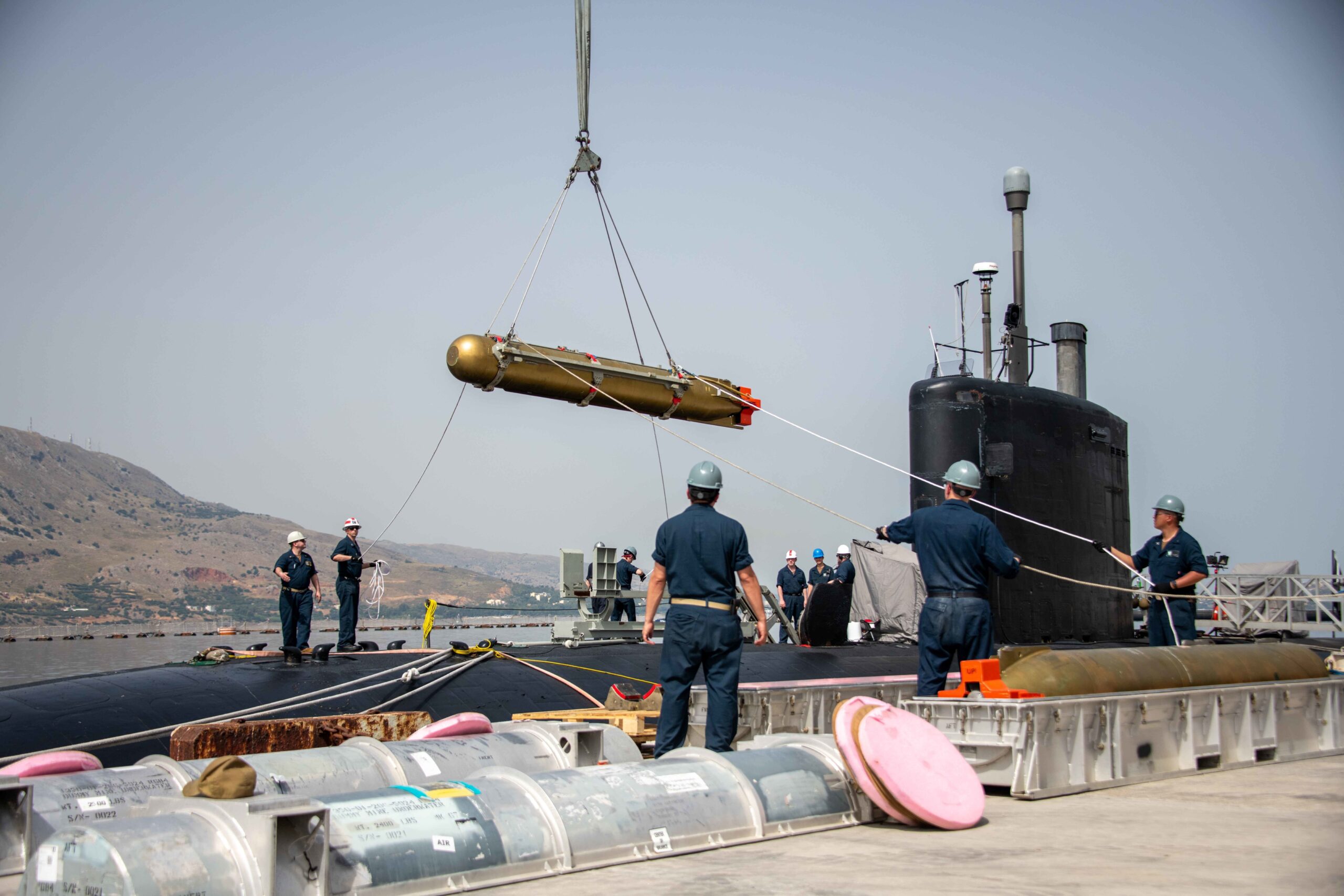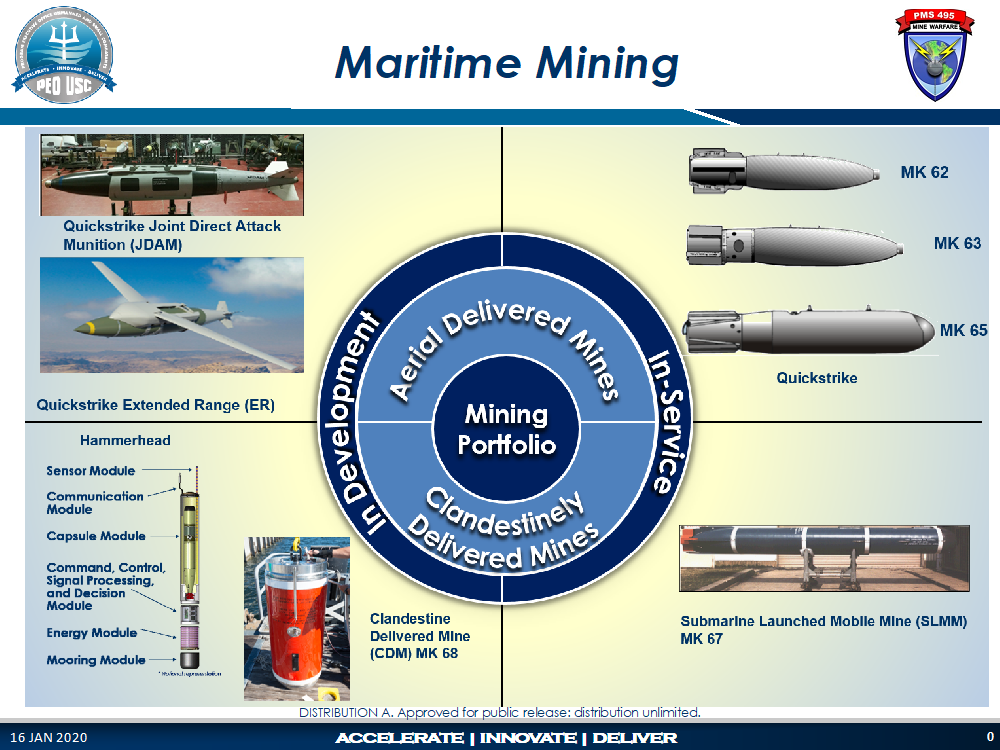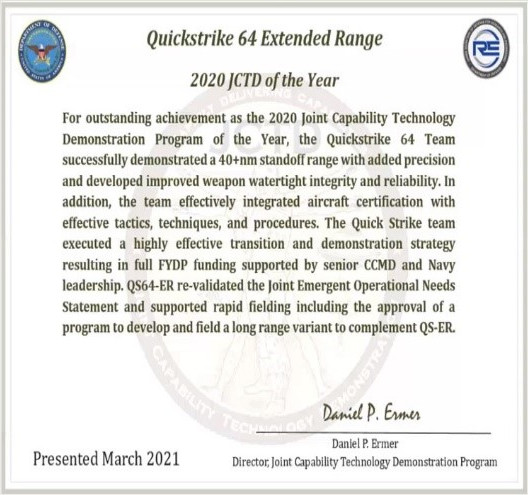By Robert C. Rubel
In a July CIMSEC article Congresswoman Elaine Luria called for the development of a new maritime strategy. A key reason she wrote the article was frustration with the Navy’s budget submission. She feels, as apparently do other members of Congress, that there is no valid strategy underpinning the Navy’s shipbuilding plan. She invokes the 1984 Maritime Strategy, with its attendant 600-ship Navy force structure as an example of the kind of effort the Navy should undertake. She also extols a 2017 Congressionally-mandated CSBA fleet architecture study that calls for the establishment of a fleet consisting of a deterrence force and a maneuver force. While I think that in general Congresswoman Luria has a good idea, and I agree with her that the onus falls on the Navy to develop such a strategy, it is important that the Navy “see the forest for the trees” in order to craft a viable strategy. In this article I will highlight potential issues with strategy development so that Navy leadership can determine an effective naval strategy.
Let’s start with trying to see the strategic aquarium water we have been swimming around in for the past three quarters of a century. As World War II was winding down Allied statesmen considered how a future world war might be averted. They decided upon the establishment of a global liberal trading order that leveled but regulated the economic playing field, using such institutions as the International Monetary Fund. Equal economic opportunity, they thought, would prevent what they saw as the causes of the world wars from again arising. But it soon became clear that the Soviet Union would play the spoiler, and so the Truman Administration ended up dispatching U.S. Navy forces around the world to keep the USSR and other authoritarian powers in check, support allies and friendly nations, and generally suppress strategic instability. This deployment became the US maritime strategy and has been constant ever since. Its goal is to preserve the global liberal trading order and its attendant political structure. Navy documents, including the vaunted 80s Maritime Strategy come and go, but only constitute subsets of the overall maritime strategy, which Samuel Huntington described in his 1954 Proceedings article “National Policy and the Transoceanic Navy.” The constancy of this strategy has turned it into the “aquarium water” — the environment we swim in every day — without really seeing it as a strategy.
The second component of our aquarium water has been the virtually absolute American command of the sea. Ever since Vice Admiral Stansfield Turner wrote his landmark 1974 Naval War College Review article “Missions of the US Navy,” the term command of the sea has been regarded as obsolete, an artifact of the ages of sail and dreadnoughts; Turner’s term “sea control” has since been adopted as the basis for Navy strategizing. Like the US maritime strategy, American command of the sea has been so complete and unchallenged that it became a tacit assumption; invisible. But now, as China builds a contending navy, the term has reappeared in the Navy’s capstone doctrinal publication NDP-1 Naval Warfare. But even there, the concept has gathered so much dust that NDP-1 errs in its definition of it. It says that command of the sea is “the strategic condition of free and open access and usage of the seas necessary for our nation to flourish.”
This definition confuses cause and effect. A free and open ocean, a mare liberum, is a US policy that goes hand-in-hand with its support for a liberal trading order. American command of the sea makes the adoption of such a policy possible. Command of the sea, in reality, is a strength relationship among contending navies. The margin of superiority of the strongest is such that the others refuse to sail out and challenge it directly. The US Navy has enjoyed just such a dominant position since it defeated the last vestiges of the Imperial Japanese Navy at Leyte Gulf, and when seapower is hitting on all cylinders it becomes invisible.
The fall of the USSR did not end history, and a challenge to the global liberal trading order (a “rules-based order” according to the latest Tri-Service Maritime Strategy document) and its concomitant American command of the sea was bound to emerge sometime; that time is now. What America needs, and what Congresswoman Luria is asking for, is a strategy to deal with that challenge. With the actual current maritime strategy and its associated command of the sea now visible, we are in a better position to consider options.
It would be a mistake to assume that the US grand strategy, along with its component maritime strategy of supporting a liberal trading order will be a constant. President Trump, with his America First policy, seemed to be putting the rudder over a bit and steering away from the kinds of international commitments the traditional strategy entailed. Similarly, writers such as Prof. Barry Posen of MIT have proposed what amounts to a scaled down version of the strategy he calls “restraint.” The Biden Administration seems to have recommitted to the global system strategy even as it has withdrawn US troops from Afghanistan. This is all to say that despite the consistency of American grand strategy it cannot be taken for granted, and any significant change such as reverting to a trading bloc strategy, would have huge implications for the maritime component. That said, let’s for the moment assume that the US will attempt to maintain its strategy of supporting and defending the global liberal trading order and thus maintain some version of its global military deployment structure.
If we make that assumption, then American command of the sea comes into play in a big way. Two researchers, George Modelski and John Thompson, did an analysis of the relationship of seapower to global leadership from 1494 to 1993, using counts of major naval combatants as an available and objective data source. They identified five cycles of global war in which the winner achieved thereby command of the sea. The winners then exploited that command of the sea to enforce an international order congenial to their interests, precisely as the US has done since 1945. However, they also discovered that command of the sea was associated – naturally enough, if you think about it – with the concentration of naval power. That is, if you count up the major combatants of all the potential contenders for global leadership, if one nation has fifty percent or more of the total, then that nation has command of the sea. However, they found that when seapower “deconcentrated,” that is, the percentage of major combatants evened out among the contenders, global war followed. They do not assert a cause and effect relationship, but certainly found a correlation.
The point of this is that even during the 80s Maritime Strategy days, the US enjoyed unchallenged command of the sea, which provided the context within which that strategy played out. Going forward, retaining command of the sea is an issue, which means that despite the success of the 80s Maritime Strategy, its value as a paradigm is limited. China is on the verge of achieving functional “deconcentration” of global naval power and that implies a deterioration of deterrence. Congresswoman Luria cites the idea that winning consists of not having to fight China. If we ascribe relevance to the Modelski/Thompson study, then any US naval building program must consider what it would take to maintain a roughly fifty percent seapower advantage over China in order to preserve deterrence. Given China’s advantage in shipbuilding capacity, as well as the global advance of technology in areas like sensing and artificial intelligence, we ought to preface any strategy development effort by determining what a new basis for command of the sea would be. Congresswoman Luria kind of nibbles at the edges of this with her recommendations for things like missile-carrying merchant hulls, but a clear-eyed analysis of command is needed to develop a lucid and viable strategy.
Beyond finding a new basis for calculating command of the sea, the concept needs to be parsed to provide purchase for strategists to develop options. Command of the sea, particularly in peacetime, consists of two parts: maintenance and exercise. The Navy with command must retain its strength in peacetime and not demobilize. This is to dissuade others from getting into the game and also because command must be exercised; that is, the navy must be dispersed around the world to do all the things needed to support, defend, and enforce the desired world order. These elements form the criteria for judging required fleet size and architecture. The traditional Navy analysis process of gaming out approved DoD contingency scenarios and then adding up presence requirements does not adequately address the criteria. What would deter China is an imponderable, and here, Congresswoman Luria’s invoking of the tactical and operational defense is apt. The key operational benefit of command of the sea is the ability to use the sea for one’s own purposes and deny it to others. A modern missile and information-based ability to deny China’s navy the ability to support national aggression via the sea is tantamount to preserving command.
Command of the sea, deterrence-based as it is, reflects the old Roman principle that if you want peace, prepare for war. There is another principle associated with command of the sea that should figure prominently in new strategy development: do not risk maintenance of command when exercising it. What that means is that unless command of the sea is actually at stake in a particular operation or battle, the nation holding command should not risk the naval assets upon which command is based in its execution. Right now, using traditional measures of capital ships, the implication is that the US should not risk its aircraft carriers in the defense of Taiwan, which has no relevance to command of the sea, unless the US loses enough of its relevant naval force such that China senses an opportunity for a wider challenge. Here again, this implies that a new calculation of the basis for command of the sea is needed in order to develop a resilient fleet architecture and to inform risk calculations.
But there is another element to the exercise of command and that is global presence. The US has traditionally used aircraft carriers as the key presence platform due to their flexibility, power, and ability to be ready on arrival. Certainly, there will continue to be situations where sea-based air power is needed, but the advent of missiles and unmanned systems mean that carriers do not have to shoulder as much of the forward presence load. Professor Wayne Hughes of the Naval Postgraduate School proposed what he called a “Bi-modal” navy that employs smaller, cheaper ships of various kinds for day-to-day presence, freeing up the carriers to concentrate on warfighting readiness. Today, the Navy’s carrier force is stretched to the breaking point with little prospect of increasing its size. A new fleet of presence-focused vessels would rationalize a new strategy focused on maintaining command of the sea in the face of China’s challenge.
By making an effort to see the strategic aquarium water we have been swimming in for the last seventy five years and picking apart the concept of command of the sea we have established a clearer and more practical context for developing a new subcomponent of the US maritime strategy. What remains is to offer some support for Congresswoman Luria’s assertion that the Navy should be the one to develop the strategy.
The Unified Command Plan, as structured in accordance with the 1986 Goldwater-Nichols Act, reserves the authority for operational strategy to the Combatant Commanders, while overall national military strategy is prepared by the Secretary of Defense. The Services are limited by law to raising, training, and equipping forces for use by the COCOMs. Thus the Navy has no business doing strategy, other than organizational strategy, like the current NAVPLAN put out by Admiral Gilday (the author of this article received a scolding from a former Undersecretary of the Navy for asserting that the Navy’s CS21 strategy had policy implications). But the UCP contains a genetic defect; it essentially sees the world as a collection of regions, all but ignoring the largest geopolitical terrain feature on the planet: the world ocean. Thus global coordination of military effort, if it occurs at all, takes place in the Joint Staff, which has no formal authority, or within the Office of the Secretary of Defense, which is mostly concerned with procurement.
When the US military was very strong this arrangement sufficed; there was enough force to mete out to the individual COCOMs. But from time to time, strategic problems arose in which the unified world ocean became an issue, and nobody but the Navy either perceived them or was interested in solving them. The first was the naval force distribution problem in the late 1970s arising from a global Soviet threat. The collection of regional war plans assumed, in the aggregate, a total of 22 carrier battle groups would be available but the Navy only had 15. Admiral Hayward felt that plans to denude the Pacific of carriers to support the NATO Central Region would provide unnecessary strategic opportunities to the Soviets. So, the Navy took it upon itself to develop an operational maritime strategy that spanned COCOM areas of responsibility. In the end the Navy coordinated with the COCOMs but the concept would not have emerged if the Navy had not taken the initiative. After the 9/11 attacks maritime security of the homeland became a critical issue. After much gaming and thought the Navy realized that the only way to secure the shores of America was to somehow generate extensive global cooperation on maritime security. It embarked on a worldwide effort to court international cooperation, again crossing COCOM boundaries and in the end publishing what became known as CS21, which was successful in stimulating that cooperation.
Today, unity of the world ocean is again a strategic issue due to a reduced fleet size and an increasing Chinese fleet size. Command of the sea is a global concept, not a regional one. Command of the sea must be exercised globally to ensure a desired world order, and maintenance of command is a national, not a regional matter. Apart from any other considerations, when the Navy’s strength declines to a certain level – when it becomes a scarce asset strategically – its employment must be managed centrally, and there is no mechanism in the UCP for that to occur. The Navy, and its sister sea services, must be managed strategically on a global basis in the context of limited resources if command of the sea is to be maintained and effectively exercised without violating the key principles associated with it.
The upshot of all this is that a new maritime strategy – correctly called for by Congresswoman Luria – must not be some derivative of the 1980s strategy or even of the CSBA study, despite the good qualities of both – but a fundamentally re-thought approach based on a clear perception of both the overall US grand strategy context and its traditional maritime component and a clear understanding of command of the sea.
Robert C. Rubel is a retired Navy captain and professor emeritus of the Naval War College. He served on active duty in the Navy as a light attack/strike fighter aviator. At the Naval War College he served in various positions, including planning and decision-making instructor, joint education adviser, chairman of the Wargaming Department, and dean of the Center for Naval Warfare Studies. He retired in 2014, but on occasion continues to serve as a special adviser to the Chief of Naval Operations. He has published over thirty journal articles and several book chapters.
Featured Image: The Royal Australian Navy destroyer HMAS Hobart (DDG 39), left, the frigate HMAS Arunta (FFH 151), the landing helicopter dock ship HMAS Canberra (L02), the fleet replenishment vessel HMAS Sirius (O 266), the U.S. Navy forward-deployed aircraft carrier USS Ronald Reagan (CVN 76), the guided-missile cruiser USS Antietam (CG 54), the Japan Maritime Self-Defense Force destroyer JS Teruzuki (DD 116) and HMAS Stuart (FFH 153) steam into formation during a trilateral exercise. (U.S. Navy photo)




